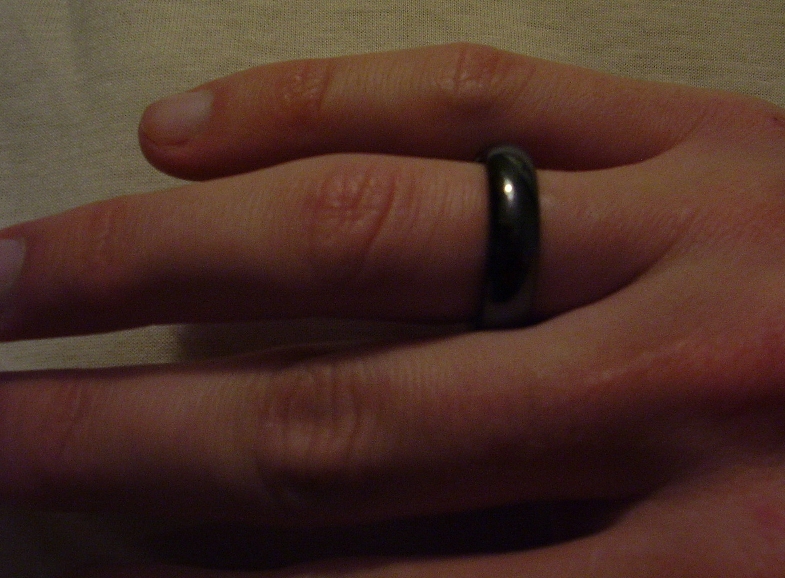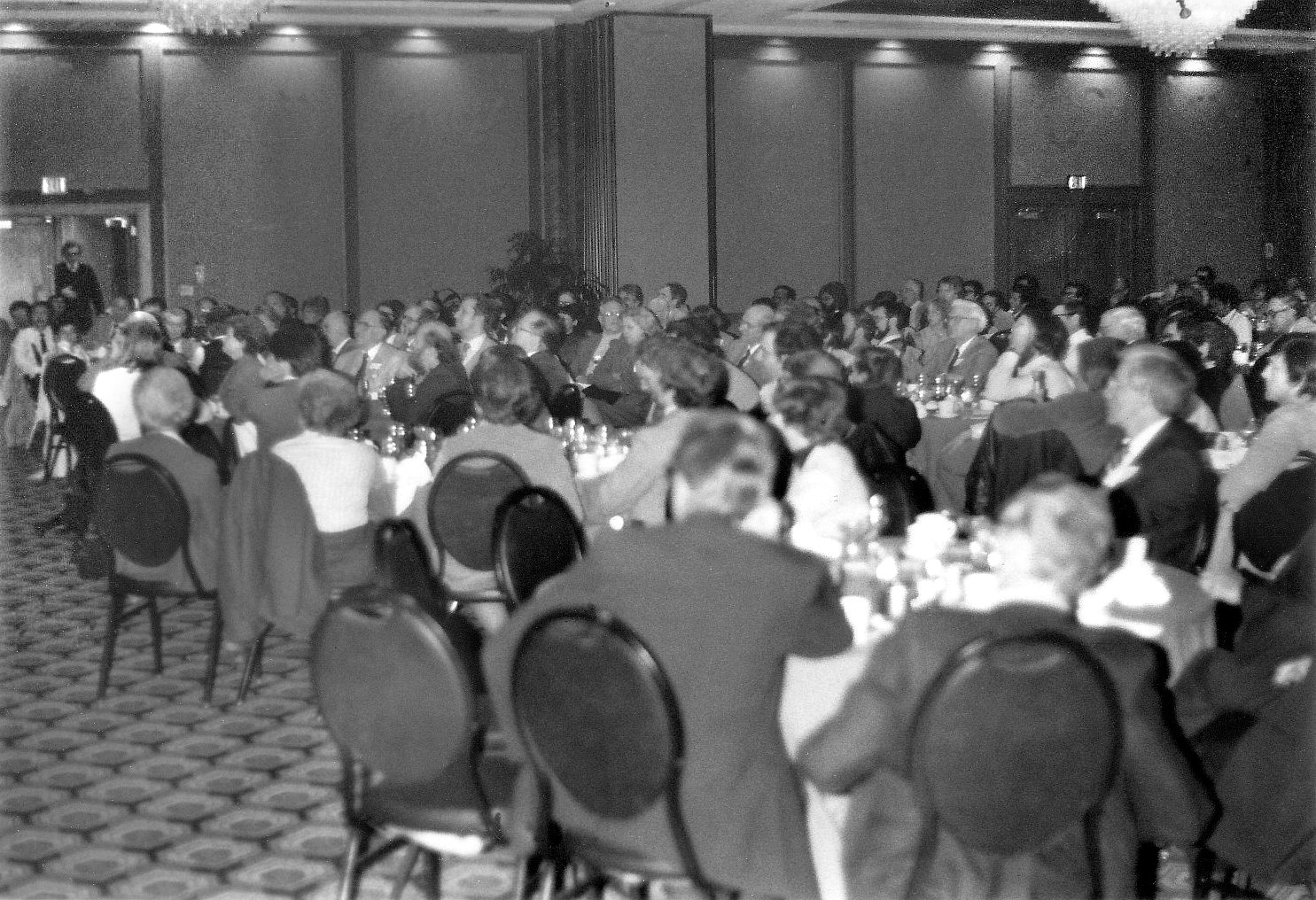|
Magnet Therapy
Magnetic therapy is a pseudoscientific alternative medicine practice involving the weak static magnetic field produced by a permanent magnet which is placed on the body. It is similar to the alternative medicine practice of electromagnetic therapy, which uses a magnetic field generated by an electrically powered device. Magnet therapy products may include wristbands, jewelry, blankets, and wraps that have magnets incorporated into them. Practitioners claim that subjecting certain parts of the body to weak electric or magnetic fields has beneficial health effects. These physical and biological claims are unproven and no effects on health or healing have been established. Although hemoglobin, the blood protein that carries oxygen, is weakly diamagnetic (when oxygenated) or paramagnetic (when deoxygenated), the magnets used in magnetic therapy are many orders of magnitude too weak to have any measurable effect on blood flow. This is not to be confused with transcranial magnetic ... [...More Info...] [...Related Items...] OR: [Wikipedia] [Google] [Baidu] |
Pseudoscientific
Pseudoscience consists of statements, beliefs, or practices that claim to be both scientific and factual but are incompatible with the scientific method. Pseudoscience is often characterized by contradictory, exaggerated or unfalsifiable claims; reliance on confirmation bias rather than rigorous attempts at refutation; lack of openness to evaluation by other experts; absence of systematic practices when developing hypotheses; and continued adherence long after the pseudoscientific hypotheses have been experimentally discredited. The demarcation between science and pseudoscience has scientific, philosophical, and political implications. Philosophers debate the nature of science and the general criteria for drawing the line between scientific theories and pseudoscientific beliefs, but there is general agreement on examples such as ancient astronauts, climate change denial, dowsing, evolution denial, Holocaust denialism, astrology, alchemy, alternative medicine, occultis ... [...More Info...] [...Related Items...] OR: [Wikipedia] [Google] [Baidu] |
American Cancer Society
The American Cancer Society (ACS) is a nationwide voluntary health organization dedicated to eliminating cancer. Established in 1913, the society is organized into six geographical regions of both medical and lay volunteers operating in more than 250 Regional offices throughout the United States. Its global headquarters is located in the American Cancer Society Center in Atlanta, Georgia. The ACS publishes the journals ''Cancer'', '' CA: A Cancer Journal for Clinicians'' and '' Cancer Cytopathology''. History The society was founded on May 22, 1913, by ten physicians and five businessmen in New York City under the name "American Society for the Control of Cancer" (ASCC). The current name was adopted in 1944. At the time of founding, it was not considered appropriate to mention the word "cancer" in public. Information concerning this illness was cloaked in a climate of fear and denial. Over 75,000 people died each year of cancer in just the United States. The top item on the fou ... [...More Info...] [...Related Items...] OR: [Wikipedia] [Google] [Baidu] |
List Of Ineffective Cancer Treatments
This is a non-exhaustive list of alternative treatments that have been promoted to treat or prevent cancer in humans but which lack scientific and medical evidence of effectiveness. In many cases, there is scientific evidence that the alleged treatments are not effective, and in some cases, may even be harmful. Unlike accepted cancer treatments, treatments lacking in evidence of efficacy are generally ignored or avoided by the medical community and are often pseudoscientific. Alternative health systems * Aromatherapy – the use of fragrant substances, such as essential oils, in the belief that smelling them will positively affect health. There is some evidence that aromatherapy improves general well-being, but it has also been promoted for its ability to fight diseases, including cancer. The American Cancer Society states "available scientific evidence does not support claims that aromatherapy is effective in preventing or treating cancer". * Ayurvedic medicine ... [...More Info...] [...Related Items...] OR: [Wikipedia] [Google] [Baidu] |
List Of Topics Characterized As Pseudoscience
This is a list of topics that have, either currently or in the past, been characterized as pseudoscience by academics or researchers. Detailed discussion of these topics may be found on their main pages. These characterizations were made in the context of educating the public about questionable or potentially fraudulent or dangerous claims and practices—efforts to define the nature of science, or humorous parodies of poor scientific reasoning. Criticism of pseudoscience, generally by the scientific community or skeptical organizations, involves critiques of the logical, methodological, or rhetorical bases of the topic in question. Though some of the listed topics continue to be investigated scientifically, others were only subject to scientific research in the past and today are considered refuted, but resurrected in a pseudoscientific fashion. Other ideas presented here are entirely non-scientific, but have in one way or another impinged on scientific domains or practices. ... [...More Info...] [...Related Items...] OR: [Wikipedia] [Google] [Baidu] |
New Age
New Age is a range of spiritual or religious practices and beliefs which rapidly grew in Western society during the early 1970s. Its highly eclectic and unsystematic structure makes a precise definition difficult. Although many scholars consider it a religious movement, its adherents typically see it as spiritual or as unifying Mind-Body-Spirit, and rarely use the term ''New Age'' themselves. Scholars often call it the New Age movement, although others contest this term and suggest it is better seen as a ''milieu'' or ''zeitgeist''. As a form of Western esotericism, the New Age drew heavily upon esoteric traditions such as the occultism of the eighteenth and nineteenth centuries, including the work of Emanuel Swedenborg and Franz Mesmer, as well as Spiritualism, New Thought, and Theosophy. More immediately, it arose from mid-twentieth century influences such as the UFO religions of the 1950s, the counterculture of the 1960s, and the Human Potential Movement. Its exact ... [...More Info...] [...Related Items...] OR: [Wikipedia] [Google] [Baidu] |
Pseudoscience
Pseudoscience consists of statements, beliefs, or practices that claim to be both scientific and factual but are incompatible with the scientific method. Pseudoscience is often characterized by contradictory, exaggerated or unfalsifiable claims; reliance on confirmation bias rather than rigorous attempts at refutation; lack of openness to evaluation by other experts; absence of systematic practices when developing hypotheses; and continued adherence long after the pseudoscientific hypotheses have been experimentally discredited. The demarcation between science and pseudoscience has scientific, philosophical, and political implications. Philosophers debate the nature of science and the general criteria for drawing the line between scientific theories and pseudoscientific beliefs, but there is general agreement on examples such as ancient astronauts, climate change denial, dowsing, evolution denial, Holocaust denialism, astrology, alchemy, alternative medicine, occulti ... [...More Info...] [...Related Items...] OR: [Wikipedia] [Google] [Baidu] |
National Science Foundation
The National Science Foundation (NSF) is an independent agency of the United States government that supports fundamental research and education in all the non-medical fields of science and engineering. Its medical counterpart is the National Institutes of Health. With an annual budget of about $8.3 billion (fiscal year 2020), the NSF funds approximately 25% of all federally supported basic research conducted by the United States' colleges and universities. In some fields, such as mathematics, computer science, economics, and the social sciences, the NSF is the major source of federal backing. The NSF's director and deputy director are appointed by the President of the United States and confirmed by the United States Senate, whereas the 24 president-appointed members of the National Science Board (NSB) do not require Senate confirmation. The director and deputy director are responsible for administration, planning, budgeting and day-to-day operations of the foundation, whil ... [...More Info...] [...Related Items...] OR: [Wikipedia] [Google] [Baidu] |
Skeptical Inquirer
''Skeptical Inquirer'' is a bimonthly American general-audience magazine published by the Committee for Skeptical Inquiry (CSI) with the subtitle: ''The Magazine for Science and Reason''. Mission statement and goals Daniel Loxton, writing in 2013 about the mission and goals of the skeptical movement, criticized the idea that people wanted to read about the paranormal, Uri Geller and crystal skulls not being relevant any longer. Paul Kurtz in 2009 seemed to share this sentiment and stated that the organization would still research some paranormal subjects as they have expertise in this area, but they would begin to investigate other areas. S.I. "has reached an historic juncture: the recognition that there is a critical need to change our direction." While editor Frazier did expand the scope of the magazine to include topics less paranormal and more that were an attack on science and critical thinking such as climate change denialism, conspiracy theories and the influence of the ... [...More Info...] [...Related Items...] OR: [Wikipedia] [Google] [Baidu] |
Committee For Skeptical Inquiry
The Committee for Skeptical Inquiry (CSI), formerly known as the Committee for the Scientific Investigation of Claims of the Paranormal (CSICOP), is a program within the US non-profit organization Center for Inquiry (CFI), which seeks to "promote scientific inquiry, critical investigation, and the use of reason in examining controversial and extraordinary claims." Paul Kurtz proposed the establishment of CSICOP in 1976 as an independent non-profit organization (before merging with CFI as one of its programs in 2015), to counter what he regarded as an uncritical acceptance of, and support for, paranormal claims by both the media and society in general. Its philosophical position is one of scientific skepticism. CSI's fellows have included notable scientists, Nobel laureates, philosophers, psychologists, educators and authors. It is headquartered in Amherst, New York. History The committee was officially launched on April 30, 1976, and was co-chaired by Paul Kurtz and ... [...More Info...] [...Related Items...] OR: [Wikipedia] [Google] [Baidu] |
Allocation Concealment
In a randomized experiment, allocation concealment hides the sorting of trial participants into treatment groups so that this knowledge cannot be exploited. Adequate allocation concealment serves to prevent study participants from influencing treatment allocations for subjects. Studies with poor allocation concealment (or none at all) are prone to selection bias. Some standard methods of ensuring allocation concealment include sequentially numbered, opaque, sealed envelopes (SNOSE); sequentially numbered containers; pharmacy controlled randomization; and central randomization. CONSORT guidelines recommend that allocation concealment methods be included in a study's protocol, and that the allocation concealment methods be reported in detail in their publication; however, a 2005 study determined that most clinical trials have unclear allocation concealment in their protocols, in their publications, or both. A 2008 study of 146 meta-analyses concluded that the results of randomized cont ... [...More Info...] [...Related Items...] OR: [Wikipedia] [Google] [Baidu] |
Rheumatoid Arthritis
Rheumatoid arthritis (RA) is a long-term autoimmune disorder that primarily affects joints. It typically results in warm, swollen, and painful joints. Pain and stiffness often worsen following rest. Most commonly, the wrist and hands are involved, with the same joints typically involved on both sides of the body. The disease may also affect other parts of the body, including skin, eyes, lungs, heart, nerves and blood. This may result in a low red blood cell count, inflammation around the lungs, and inflammation around the heart. Fever and low energy may also be present. Often, symptoms come on gradually over weeks to months. While the cause of rheumatoid arthritis is not clear, it is believed to involve a combination of genetic and environmental factors. The underlying mechanism involves the body's immune system attacking the joints. This results in inflammation and thickening of the joint capsule. It also affects the underlying bone and cartilage. The diagnosis is made m ... [...More Info...] [...Related Items...] OR: [Wikipedia] [Google] [Baidu] |
Osteoarthritis
Osteoarthritis (OA) is a type of degenerative joint disease that results from breakdown of joint cartilage and underlying bone which affects 1 in 7 adults in the United States. It is believed to be the fourth leading cause of disability in the world. The most common symptoms are joint pain and stiffness. Usually the symptoms progress slowly over years. Initially they may occur only after exercise but can become constant over time. Other symptoms may include joint swelling, decreased range of motion, and, when the back is affected, weakness or numbness of the arms and legs. The most commonly involved joints are the two near the ends of the fingers and the joint at the base of the thumbs; the knee and hip joints; and the joints of the neck and lower back. Joints on one side of the body are often more affected than those on the other. The symptoms can interfere with work and normal daily activities. Unlike some other types of arthritis, only the joints, not internal organs, are af ... [...More Info...] [...Related Items...] OR: [Wikipedia] [Google] [Baidu] |

.png)




